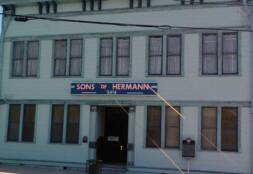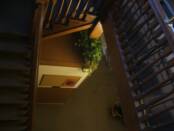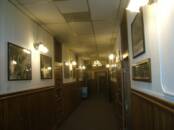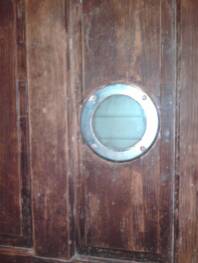
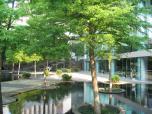
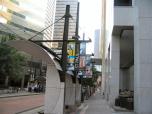
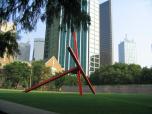

Uniformity is the bane of all who desire a comfortable and predictable order in life. It’s the job description of forces antagonistic to the uniformity to rearrange the status quo just enough to ensure it realizes its ways are not immortal. As the namesake birth of an organization whose name is affixed to Dallas’ oldest commercial wooden building rocked the order of his day; likewise the building itself was set in a neighborhood of Dallas that would forever spicily challenge its city parents’ button-downed image of their city on the prairie.
Dallas in 1910 was a bustling city of nearly 100,000 persons growing out from Downtown in every direction. One of these areas of growth was in Deep Ellum, which was developing as a thriving neighborhood for African American and European immigrants. German immigrants were a significant portion of the latter group and the Order of the Sons of Hermann constructed a building in 1910 to serve as a meeting hall and cultural center. The Sons of Hermann Hall on Elm Street is thus the oldest wood frame structure still standing in the City of Dallas
According to wikipedia, The Order of the Sons of Hermann, also known as Hermann Sons and by its German name as der Orden der Hermann's Soehne or Hermannssöhne, was formed as a mutual protection society for German immigrants in New York City on July 20, 1840. The order provides low-cost insurance and mutual aid and has historically promoted the preservation of German language and traditions. The Sons of Hermann was formed by Dr. Philip Merkel, George Heiner, John Blatz, A. Auer, R. Schwendel, W. Kohler, and Philipp Germann on the Lower East Side, in response to anti-German prejudice during a period of heavy German immigration to the United States.
So who was Herman?
Hermann the Cherusker is a German folk hero who lived from 18 BC to 21 AD. He annihilated three Roman Legions in the Battle of Teutoburger in 9 A.D. His victory over the Romans was the beginning of the end of their domination over Germany as well as the British Isles. The Germans view him as a symbol for strength.
Hermann was a German prince of the Cherusker tribe. He was educated by the Romans, and became an officer in the Roman military, but objected to the imposition of Roman law upon the German people when he returned to Germany. He knew that the Romans had an advantage in equipment, organization, and numbers, but he was also certain he could defeat them if they sent their army into Germany due to his knowledge of the land. He was victorious in battle and the Romans were defeated. This gave hope to other waiting rebels to rise against the Romans to attempt to obtain freedom for their lands
2,000 years later at Sons of Hermann Hall, you find sons and grandsons of Germans, Italians, Poles, Czechs, English and other Americans of different ancestry dancing together to swing music on Wednesday nights, strumming their guitars on Thursday nights at an event called Electric Campfire Jam, and listening to music acts on Friday and Saturday evenings.
As you walk in the front door of this old wooden building, leaving the early evening air of urban life behind you, your eyes travel down a long hall lined with pictures and posters memorializing 100 years of history of the Sons of Hermann. A wide diversity of activities stamped on both walls flashes bowling tournaments, picnics, annual lodge meetings, concerts, and other casual cultural affairs designed to bring people together in community. As you enter the bar on the right side of the hall, you come into another room containing walls replete with history. In the hour before the evening’s main event, the amiable bar tender will provide you with everything from soda water and soft drinks to beer, wine or other alcoholic beverages that they have. You can sit down at one of the tables or hop on the stool at the counter watching sports or other entertainment on one of the two televisions.
You usually don’t come to the Sons of Hermann Hall though just to watch tv and drink in the bar. You finish your glass and wander back to the hallway where you turn right and proceed to the wooden staircase at the back of the hall. As people are running by you at 7:45 at night, going up the stairs, you determine that the real activity must be up there. Trying to look as if you know what you are doing and have belonged there all of your life, you climb up those stairs after them. When you reach the landing on the second floor, the big doors in front of you open up to the grand ballroom, decked out with the hardwood dance floor, a raised stage, full bar, and professional sound system. You are walking into an original Texas dance hall.
Over the years, as the merchants and financeers of Dallas strove to imagine Dallas as the sophisticated international city where all the women shopped at Neiman Marcus and the business community continually pushed the boundaries in the “City with No Limits”, The Sons of Hermann Hall was making its own social mark on the Deep Ellum community from its bowling leagues, visiting German choirs, serving as a set for several movies such as Robocop, and of course everyone’s favorite television show, Dallas, where one scene was shot..
The most interesting piece of lore, however, concerns the peep holes placed on the back door of the building and on the door to the back entry hall. Some members think these might have been placed on the doors during the 1920’s. Everyone knows that part of the Roaring Twenties in the United States was celebrated behind closed doors due to a cultural anomaly that stamped its foot on the United States constitution during that time. While others were shopping downtown at Neiman Marcus, exactly what were these members doing behind the closed doors of their building after their bowling balls were put away? A woman I spoke with named Bobbie claims ghosts have inhabited that building. As we are swing dancing and listening to musical acts, perhaps we should place our ears to the walls and see what we can find out.
From Bowling to Dancing...100 + Years in Dallas' Old Wooden Hall
Posted: June 1, 2012 by Chuck DeShazo
